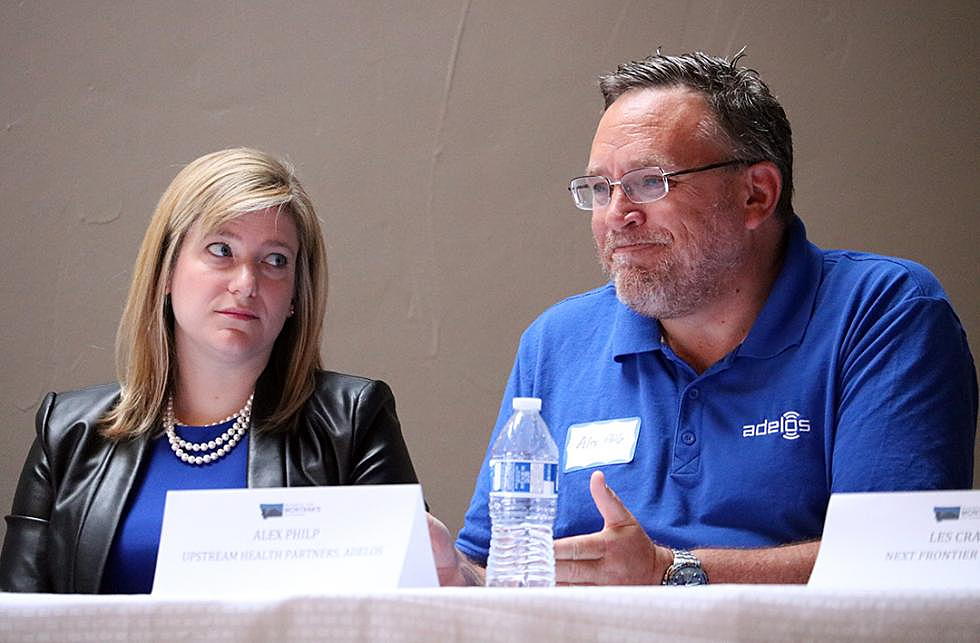
Montana’s public lands drive economic growth, give state recruiting advantage
Over a five-year span ending in 2015, venture capital invested in Montana's early stage companies averaged just $5 million a year, placing the state near the bottom of the national list.
By last year, that number had increased to $83 million.
“Some of that was from our fund, but it's also indicative of the larger trend of more capital flowing into the state from investors outside the state,” said Les Craig of Next Frontier Capital, located in Missoula and Bozeman. “Access to capital in Montana is changing.”
That change has driven the state's tech sector and entrepreneurial spirit to new heights in recent years. The industry now supports more than 15,000 jobs that pay an average wage of $68,000 a year, according to Headwaters Economics.
That's well above the statewide average of $41,000.
On Thursday, several technology leaders in Missoula gathered with members of Business for Montana's Outdoors to discuss the sector's growth and the critical role public lands play in fueling it.
While quality of life means different things to different workers, most agreed that Montana's public lands stand foremost among them, and preserving them is vital to continued economic growth. They serve as a powerful tool for recruiting top talent, and they're closely tied to the unique values fostered by many Montana startups.
“What out-of-state companies find when they plan an office here is, they find a local workforce that's really loyal and engaged,” said Christina Henderson, executive director of the Montana High Tech Business Alliance. “That's completely integrated with our sense of work-life balance and our connection to landscape and outdoor recreation.”
The value of outdoor recreation in Montana represents a $7 billion industry, though business leaders contend it’s worth more than dollars alone.
The products created by onXmaps in Missoula are based on public lands, and the ability of LumenAd to compete on a national scale is, at least in part, a result of Montana's outdoor heritage.
“We wouldn't be able to compete at the level that we do if we were located anywhere else in the country,” said Anthony Krolczyk, marketing director at LumenAd. “It's a distinguishing factor of why many of our partners want to work with us. It resonates on a different level when we're in Montana and they know we understand the value of our natural resources.”
Over the last 40 years, non-metro Western counties with significant protected public lands saw job opportunities increase by more than 344 percent, according to Business for Montana's Outdoors.
As technology levels the playing field, workers no longer need to reside in the likes of Seattle or the Silicon Valley. The exodus of talent from congested metros with high living costs has given Montana an advantage it didn't have a decade ago.
“Montana has a deep entrepreneurial ecosystem that offers a unique competitive advantage, and we need to embrace that and not compare ourselves to Silicon Valley or Boulder or other places,” said Henderson. “What we have is this unique mix of assets that have created a culture within the state and its individual companies that is attractive to people. Embracing that is part of our strategy for moving forward.”
The state's outdoor heritage and appreciation for public lands may also lie at the heart of the membership growth recorded by Business for Montana's Outdoors in recent years. The organization now claims 1,800 members that support 5,000 jobs.
The organization advocates for the protection of public lands and highlights the role they play in fostering Montana businesses and economic growth. That's important to many members, including Alex Philp, founder and chief technology officer at Adelos.
“I'd like to have businesses that are members collectively, intelligently and in nonpartisan ways advocate for the protection of that which is underpinning so much of the economic growth we've been talking about,” said Philp.
“The capital wouldn't be here if there wasn't the talent, the business model and profit, so we're reaching critical mass. But let's not forget how we got here, and that's our public lands.”
